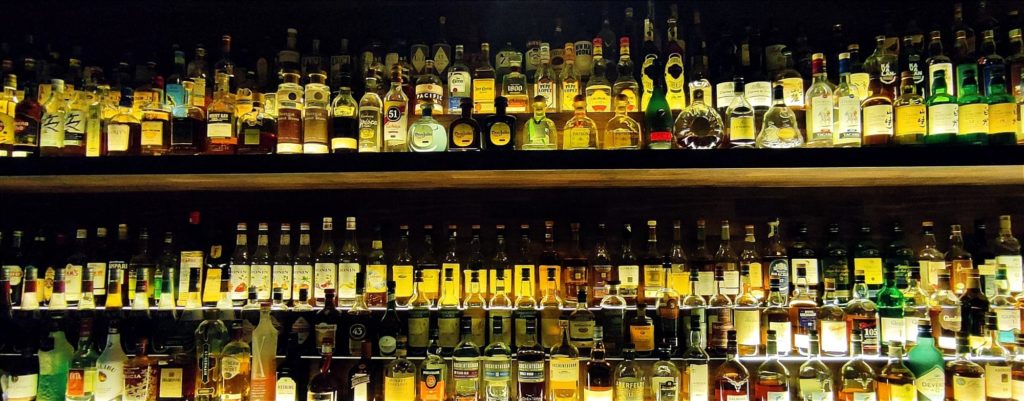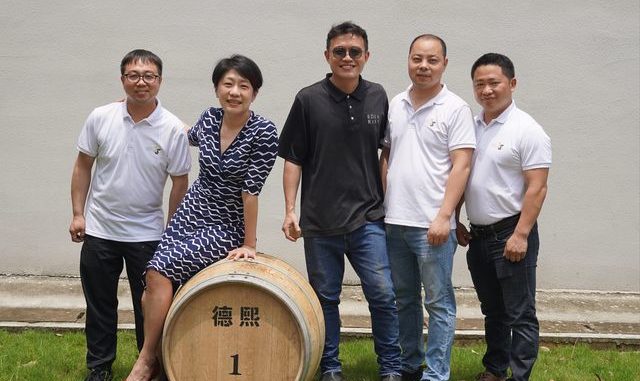
As there were far more quotes than space allowed in my China whisky story for Wine Searcher — read it here — here are plenty of additional insights from people in the trade, including:
- Bastien Ciocca, co-owner, Hope & Sesame
- Judy Chan, CEO, Grace Vineyard
- Jay Roberston, CEO, Nine Rivers
- Kelvin Tam, The Scotch Malt Whisky Society
My next Grape Wall newsletter will also focus on Chinese whisky (sign up here). Imported whisky has been rising in recent years and in 2023 reached half the value of all incoming wine (see more stats here) and buoying hopes that demand for local producers will follow.

1 How many local whiskies have you tasted? And how interested are bar goers in these?
Bastien Ciocca: I got to try quite a few as we receive many samples from distilleries to get our feedback first. There are maybe five to six bottles that I am genuinely impressed by their quality and personality.
It’s a very new concept to Chinese and foreign guests in our bars. [Hope & Sesame bar] SanYou has about 22 bottles of whisky made in China with Chinese malts and many guests are impressed but septic about their quality. It will take time to be recognized and appreciated by whisky drinkers.

2 What are the biggest changes between now and 2003 when started to promote single malt whisky?
Kelvin Tam: One, the number of whisky enthusiasts. Back then, there were about 300 in all of China, now, there are maybe 500,000 to not quite a million.
Two, the level of knowledge has increased tremendously. Whisky enthusiasts in China today know so much about whisky that they are generally on par with enthusiasts in Scotland.
Three, so many more people are actively promoting whisky, whether it is or blends, Scottish or American, and so on.c. Now every brand has one or more ambassadors.
3 What styles should local producers pursue?
Jay Robertson: The only way we could group our target market would be to simply say “anyone who is Chinese that drinks alcohol”. We want to be a producer that appeals to absolutely everyone. Hence using the strap line Whisky For The People.
Kelvin Tam: Core whisky consumers, mainly whisky enthusiasts, accept, even demand, a wide span of flavors. They are skewed toward peat-loving whisky.
Yet, whisky drinkers in the broader base tend to be more skewed toward the more “common” traits of sweetness, fruitiness and mellowness. Many even reject peaty flavors.
Therefore, I believe a successful Chinese distillery should be set up to make as broad a range of flavors as practicable.

4 What should qualify a whisky as “Chinese”?
Bastien Ciocca: A true Chinese whisky would need to be distilled and aged locally. Many scotches get their malts from other countries and it’s accepted, a similar standard is acceptable but locally grown malts would be far better as China has all the right environment and climate to do so.
Kelvin Tam: I believe core whisky consumers expect a Chinese whisky to be “Chinese”, which means made entirely in China, from mashing to fermentation to distillation to maturation, all carried out in China.
I don’t think consumers would demand local ingredients or local wood. These two elements are rather a promotional unique selling point than a must. Blending with imported whisky, even if resulting in better whisky, will be considered cheating, hence rejected by at least core consumers.”
Jay Robertson: No doubt some local producers will try to replicate the style of scotch and will inevitably sell some bottles. But the first producer to define the brand-new category of Chinese Single Malt Whisky with a world-class product that is unique in flavor and aroma is highly likely to be very successful.
I believe that whisky lovers in China will rally to support products that they can be proud of saying “this is Chinese whisky” much as they have done in recent years with locally produced wines.

5 What are the growth prospects for whisky in China?
Judy Chan: I believe whisky will continue to go up, while we will face challenge on wine demand. Baijiu by far is the biggest alcohol category, demand will still be strong for the top brands. As for beer, I think craft beer will have an increase in demand
Roberston: Whisky demand won’t slow down in my opinion. But then I also don’t see local production cannibalizing the whisky import market either.
There will be some overlap. But locally produced whisky will create its own market through having its own identity — as long as local producers understand the need to differentiate.

6 What was it like making the shift from wine to whisky?
Judy Chan: The biggest difficulty is that the team has a lot of experience with making wine and brewing craft beer, yet none of them have any prior experience with distilling whisky before. Luckily with the guidance of our consultant who was the former master distiller at Lagavulin and Caol lla, the team quickly understood and learned the process… We always believe we have to love what we produce and if we make a good quality product, we will be able to find enough of followers to support us.

7 What were the three most notable days in setting up Nine Rivers?
Jay Roberston: Signing the land deal to purchase the land was the first major milestone. Unlike the west, we can’t just convert some gnarly old build into a distillery by retrofitting done sprinklers and whacking in a fire exit.
It has to be a bespoke construction to comply with fire regulations and the mountain of safety related standards. Buying land is critical — no developer will randomly build anything to the standard required and rent it out. To secure the chance to buy land. As a startup. In a country that is actually short of land. With no multinational conglomerate status or backing. That is a serious achievement. That took 17 presentations over two years.
Second biggest day: Definitely the start of construction. Not to be confused with the groundbreaking ,although that was a big day. Actually rolling in the excavators and the trucks to starting rip 17,000 cubic meters of mud off the top of the plot to get it level.
Third biggest: The first three stills arriving last week. That was the point at which absolutely everyone that said “this will never happen” finally started to eat their words. Obviously it’s human nature for some people to just be whiny and negative about something as ambitious as Nine Rivers Distillery. But there always comes a point where there’s no denying that it’s a reality. The arrival of the stills was that day.
8 How long before we see a major Chinese brand break through?
Kelvin Tam: In less than a decade, more than 30 local whisky distilleries have sprung up. None has yet had significant volume success. We are still waiting for the first “Kavalan” of mainland China to emerge. I believe Chinese whiskies have a long way to go, not because they are Chinese, but because success can only be achieved by doing everything right: product quality, marketing strategy, distribution effectiveness.
Grape Wall has no sponsors of advertisers: if you find the content and projects like World Marselan Day worthwhile, please help cover the costs via PayPal, WeChat or Alipay.
Sign up for the free Grape Wall newsletter here. Follow Grape Wall on LinkedIn, Instagram, Facebook and Twitter. And contact Grape Wall via grapewallofchina (at) gmail.com.


Leave a Reply
You must be logged in to post a comment.